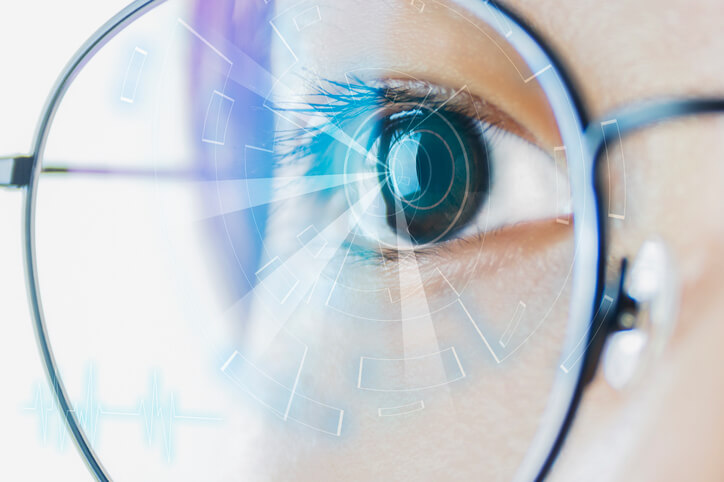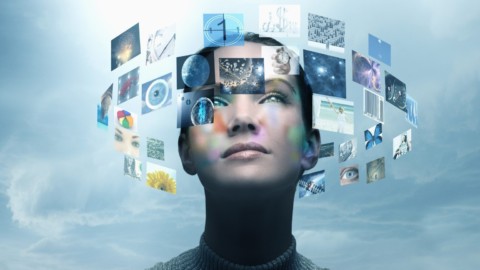AI-based diagnosis via retina
A lot of people are oblivious of the fact that their eyes can act as a watchdog for their health. Retina is being used to diagnose various types of illnesses whereby doctors observe the blood vessels of the retina for any complications. Based on the type of complication identified by looking at the retina, doctors can determine the type of disease a patient is suffering from. Retina can be used to diagnose conditions or diseases including diabetic retinopathy, cardiovascular disease and cancer.
AI helps in the diagnosis of diabetic retinopathy, whereby it accurately identifies and classifies high-resolution images through convolutional neural networks. This identification and classification is achieved by supplying several retinal images that constitute varying grades of diabetic retinopathy to the AI machine.
In the wake of multiple exposures to numerous annotated retinal images, the AI machine masters to individually rank diabetic retinopathy, which can effectively help to ascertain which diabetic retinopathy patients require ophthalmologist assistance.
AI aids in the diagnosis of cardiovascular disease via retina by assessing a myriad of variables obtained from the blood samples and history of the patient including gender, age, smoking status, body mass index, blood pressure, cholesterol levels and glucose.
These variables can then be used by cardiovascular risk calculators to determine the risk of facing a major cardiovascular event.
To assess or prove the accuracy of AI in retina-based diagnosis of diseases and conditions, researchers conducted a study to determine the effectiveness of AI applications in detecting diabetic retinopathy on 296 patients suffering from type 2 diabetes.
Following the grading of retinal images, the researchers revealed that the use of automated AI analysis is highly sensitive in identifying diabetic retinopathy, hence, could act as critical equipment for mass retinal screening, primarily in those with diabetes. This proves that AI-based diagnosis through retina is highly-accurate.
Also, from the same study, while grading the retinal images of the patients that took part in the study, ophthalmologists detected diabetic retinopathy in 191 patients while the AI software used detected the same condition in 203 patients. This shows that AI-based diagnosis via retina not only reaches doctor-level accuracy but also surpasses it.
| Recommended for you | |
| Google’s AI can predict heart diseases by scanning retina | |
| FDA approves AI software to detect diabetic retinopathy | |
| Inside the heart of deep learning in healthcare |
Key players developing innovative products for diagnosing via retina
Since retinal-based diagnosis is proving to play a crucial role in the healthcare sector, many companies/startups are now considering investing in the development of innovative retina-based diagnosing products. Some of those playing a key role in the production of advanced products for diagnosing via retina include Google, Verily, IDx, Optos, Heidelberg Engineering and Optical Imaging Ltd.
Google and Verily together, have developed AI software that can be used to determine the risk of a person to heart disease.
The software analyzes scans of a patient’s retina and arrives at data which may include patient’s blood pressure, age, and smoking habits.
The data collected can be used to predict patient’s risk for experiencing cardiac events like heart attack. Google is also working hand in hand with Aravind Eye Care System to develop a retinal screening system. The company served Google with vital images required for the training of Google’s image parsing algorithms. Basically, the system works by employing deep learning technique, which enables Google to distinguish between people, cats and dogs.
Optos developed ultra-widened (UWF), which is a retinal imaging device that helps eye care professionals to detect, diagnose, record and treat ocular pathology. The UWF retinal imaging products produced by Optos include Image Modalities, practice focus and patient demographics.
Optimal Imaging Ltd has developed The Retinal Function Imager that allows noninvasive, in-vivo functional evaluation of blood flow in the retina.
The device uses a stroboscopic fundus camera to conduct quantitative and qualitative imaging of secondary and tertiary vessels (serving the retinal veins and arteries) blood flow.
As red blood cells move within the retina, the velocity of blood flow is calculated in intervals below 140 msec.
IDx developed IDx-DR that works by automatically discovering above mild diabetic retinopathy in people aged 22 years and above diagnosed with diabetes yet not diagnosed with diabetic retinopathy. T
his device is used alongside Topcon NW400. IDx-DR is approved by the FDA for marketing and to be applied in the automated discovery of diabetic retinopathy.
Hunan University lab hosting CHANGSHA, a team of dedicated researchers has seen the launch of AI algorithm capable of discovering diabetic retinopathy. This algorithm helps doctors to identify diabetic retinopathy signs by analyzing pictures through the use of a supercomputer center.
Conclusion
At present, AI is being used to identify and group high-resolution images through convolutional neural networks, with the entire identification and classification process being fulfilled by supplying numerous retinal images comprising of different grades of diseases to the AI machine, which is prompted to master the diseases to be used as a determinant for various conditions in patients.
Google, Verily, IDx and Optos are some of the famous key players in the AI-based diagnosis via retina. The continued advancement in technology is likely to see a significant increase in the number of players in this sector. This is mainly attributed to the increasing demand for more AI-based solutions in the diagnosis of diseases or conditions via retina.
Since AI is proving efficient in discovering diseases by just observing the retina, healthcare providers are likely to have an easy time when it comes to diagnosing their patients.
On the other hand, patients are likely to have their conditions known early enough before reaching a serious stage. Therefore, hospitals all over the world should be ready to try the amazing technology of AI-based diagnosis through retina if they wish to take the quality of their healthcare a notch higher.
Image credit: www.istockphoto.com

















